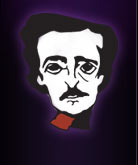MWA #3 — Setting and Description
 Continuing with recaps from the Mystery Writers of America University presentations, I’m sharing Rex Burns’ lesson on Setting and Description.
Continuing with recaps from the Mystery Writers of America University presentations, I’m sharing Rex Burns’ lesson on Setting and Description.
In his opening remarks, he told us “Story is number one. It’s how you tell it.”
First, he defines setting as “the time and location of an action” and description includes the means of picturing that setting for the reader. He also stressed the importance of setting in a mystery because, “that’s where the clues are.”
Uses of description include supporting the theme of the story, which may include symbolism.
(My aside is that I’ve never consciously thought of symbolism in my work, and this usage takes me back to my high school teacher, Mr. Holtby. We were always tasked with finding the meaning behind the story, and one student finally asked him if authors actually tried to write that way. His answer, which has stuck with me and kept me from despair when I’m trying to think of my work as anything but shallow dreck, was “Probably not, but when he’s looking for the right word for a sentence, that’s going to be the one that fits.”) End of my take. Back to Mr. Burns.
Burns went on to mention other uses of description – to further the action, to pace the action, to modulate the story’s mood, and to reveal character. The world fiction authors are writing about it a fictional one, yet it’s their job to make that world real to the reader for the duration of the story. Description is one of the most compelling devices to this end.
Another aside – Mr. Burns is a professor of creative writing and English, so his talk was filled with “definitions” of things. Whether we give it a label or not, the technique is there.
He suggests the use of “imagistic compression” and gave examples of keeping imagery short, especially in mystery, to leave room for action and character development. As Chekov said, ” Don’t tell me the moon is shining; show me the glint of light on broken glass.”
When more detail and description is warranted, he suggested moving from the general vista, or a broad view, to a particular image that emphasizes a key quality of the scene. The author’s job is to orient readers without being obtrusive.
In a mystery novel, description can further the action by placing clues in the setting. A fingerprint, a puddle of water, or a book out of place. He also suggests the use of metaphor and simile, although he warns to use them sparingly.
Pacing can be anything from where you place chapter breaks to how long your paragraphs are. Short descriptive passages can also pace the story’s flow. You don’t want to divert the reader’s attention, but rather broaden it.




